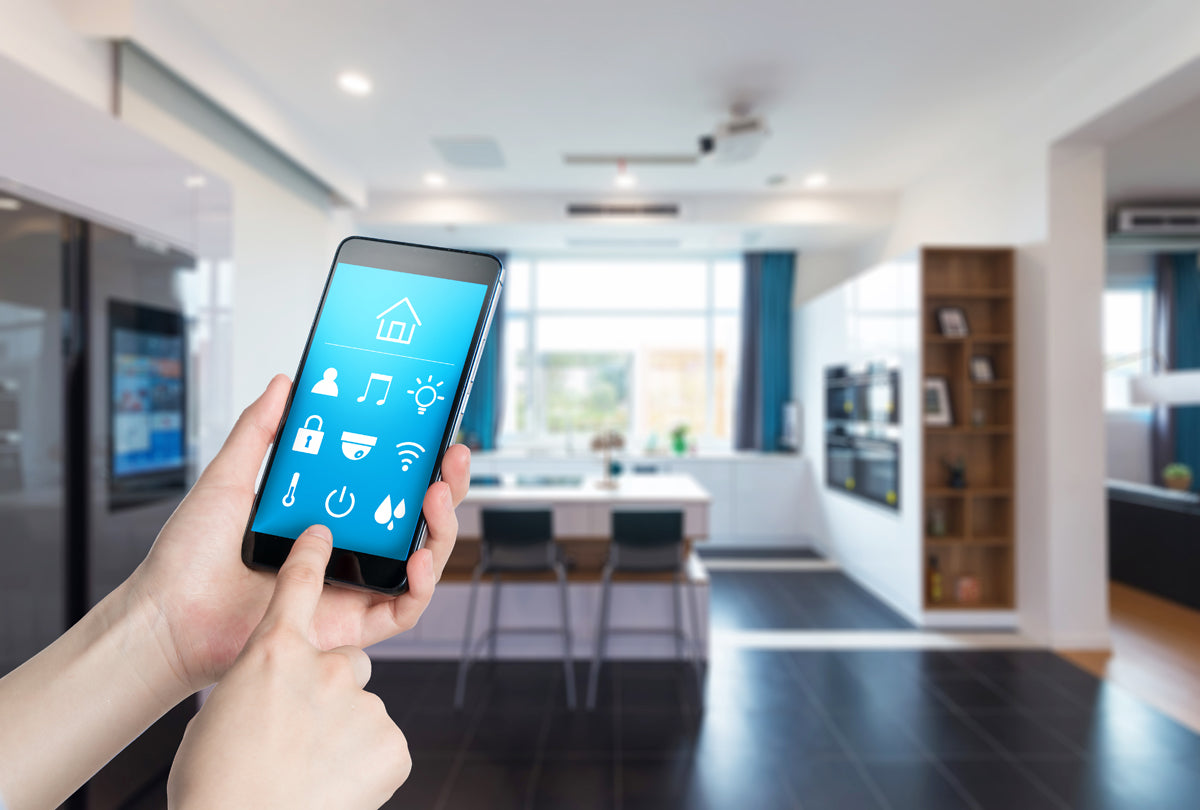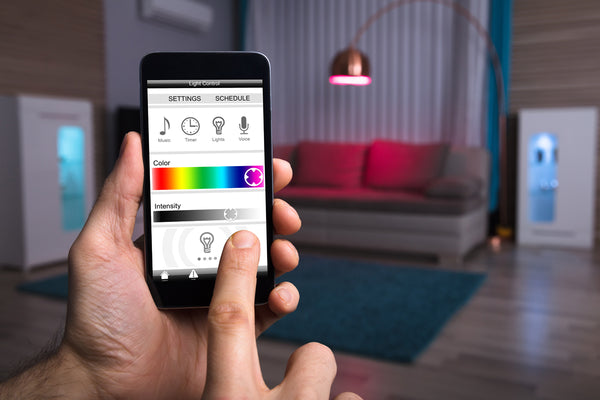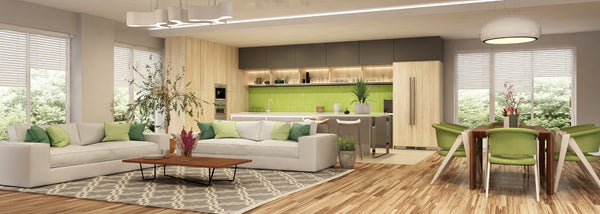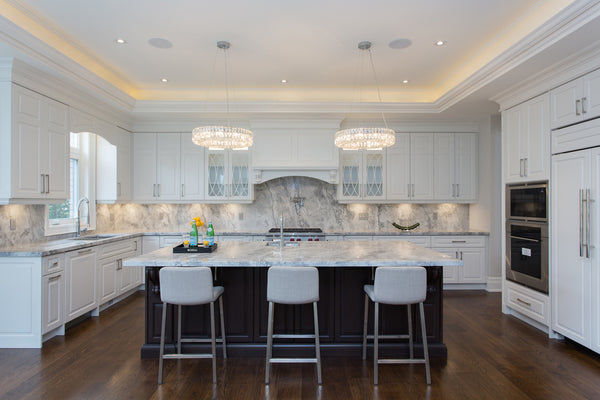On orders $99+
On orders $99+

Upgrading your home with LED lighting is an empowering step towards energy efficiency, superior performance, and enhanced aesthetics. As DIY homeowners delve into the vast world of LED home lighting, understanding the intricacies of this technology becomes crucial. This comprehensive guide aims to illuminate the path, helping you navigate through the sea of options, from selecting the perfect lumens to understanding the significance of the Color Rendering Index (CRI), and beyond.
Understanding LED Technology
LEDs (Light Emitting Diodes) represent the pinnacle of lighting technology, known for their incredible efficiency and longevity. Unlike traditional incandescent bulbs that waste much of their energy as heat, LEDs use energy to produce light, which significantly cuts down on electricity usage. Imagine reducing your home's lighting energy consumption by up to 80% while enjoying a light source that can last decades—LEDs offer this transformative potential.

The Latest in LED Innovations
The landscape of LED lighting is dynamic and ever-evolving, particularly as integrated LED technology becomes a favored choice in home remodeling and new construction. These home lighting fixtures, which merge LEDs directly into the hardware, are becoming increasingly popular among designers and homeowners for their sleek profiles and ease of installation. Integrated LED lighting fixtures are now seen as the go-to option for those looking to modernize their homes with fixtures that are not only aesthetically pleasing but also built to last without the need for bulb replacements.
Modern LED bulbs and light strips, enhanced with smart technology, can be controlled via smartphone apps, offering unprecedented control over brightness, color temperature, and even the timing of lighting. This adaptability is ideal for DIY enthusiasts keen on tailoring their home environments to reflect both their style and functional needs. Today's developments in LED technology also emphasize compatibility and ease of integration, allowing these advanced lighting solutions to fit seamlessly into existing fixtures without extensive rewiring or complex installation processes.
As integrated LED fixtures carve out their niche in the market, they appeal for their minimalistic design, energy efficiency, and reduced environmental impact, making them a preferred choice for sustainable home design. These innovations are shaping a new era in home lighting, where functionality, style, and sustainability intersect to enhance modern living spaces.
Choosing the Right LED: Lumens and Color Rendering Index (CRI)
When transitioning to LED lighting, understanding lumens and CRI is crucial. Lumens measure the amount of light emitted by a bulb, which means higher lumens will provide brighter light. As a DIY homeowner, you'll need to consider the function of each room. For instance, a kitchen or home office might require LEDs with a higher lumen count for clear visibility, whereas a bedroom or living room might benefit from fewer lumens to create a cozier ambiance.
CRI is another essential factor—it measures the light's ability to reveal the true colors of objects compared to a natural light source. A higher CRI is particularly important in areas where color differentiation is key, such as in kitchens where food preparation takes place or in bathrooms used for makeup application. LEDs with a CRI of 80 or above are generally regarded as good at color rendering and will enhance the natural hues of your home's interiors.

Navigating the Pitfalls of LED Lighting
While the transition to LED lighting offers numerous benefits, it does come with its own set of challenges that need careful consideration. One significant downside is the higher initial cost, including fixtures with integrated LEDs, compared to traditional bulbs. However, the long-term energy savings and lower replacement costs can help offset this initial investment. Additionally, some users find the light emitted by LEDs—both in bulb and integrated fixture form—can be too harsh or clinically bright. This issue can often be mitigated by opting for LEDs with adjustable color temperatures, which allow for a customization ranging from warm, cozy yellows to crisp, clean blues, depending on the desired ambiance.
Another concern specific to integrated LED fixtures is their non-replaceable nature. Once the LED reaches the end of its lifespan, the entire fixture might need to be replaced, which can be more costly and less sustainable than simply replacing a bulb. This is a crucial consideration in the cost-effectiveness and environmental impact of integrated LEDs. Although, increasingly fixtures with replaceable LED modules are coming into market.
Compatibility with existing home electrical systems is also a hurdle. Many older dimmers are not designed to handle the low electrical load of LED bulbs, which can result in flickering or inadequate dimming. While integrated LED fixtures are generally designed with modern standards to ensure better compatibility, both scenarios may require upgrading to LED-compatible dimmers. Fortunately, this is typically a straightforward DIY project that can enhance your home’s lighting functionality and is an essential step for those upgrading from older, incandescent setups.
Navigating these pitfalls requires a balanced approach, weighing the advanced capabilities and energy efficiencies against the potential need for future fixture replacements and initial setup costs. By understanding these challenges, homeowners can make informed decisions that align with their lighting needs and sustainability goals.

Implementing LED Lighting in Your Home
As you embark on integrating LED lighting into your home, consider each room's needs and how different LED options can meet them, including the innovative choice of lighting fixtures with integrated LEDs. These fixtures provide a seamless solution, eliminating the need for bulb replacements by incorporating LED technology directly into the design. Evaluate your existing fixtures for compatibility and explore how integrated LED fixtures could simplify installation and enhance the aesthetic of your space.
Integrated LED fixtures are especially beneficial for areas requiring sleek, uninterrupted lighting designs such as under-cabinet kitchen lights, bathroom vanity lights, or modern ceiling installations. They often come with added benefits such as longer lifespans and better energy efficiency compared to traditional LED bulbs. For those who enjoy project-oriented tasks, installing LED-compatible dimmers or opting for entirely new fixtures designed for optimal LED performance can be a rewarding endeavor.
By choosing integrated LED lighting or upgrading to compatible LED bulbs, you're not just replacing light sources—you're enhancing the quality of light across your home and stepping into a future where your living space is not only more sustainable but also more controllable and visually appealing. Whether you're highlighting artwork with precision lighting, creating a layered lighting effect for multi-functional spaces, or seeking a minimalist design, LED technology offers the versatility and performance to bring your vision to life. Embrace this lighting revolution with confidence, knowing that your choice contributes to a brighter, greener, and more efficient home.
Helpful Links:
Shedding Light on Lumens, Watts, and Kelvin: A Comprehensive Guide to Lighting Measurements
Leave a comment